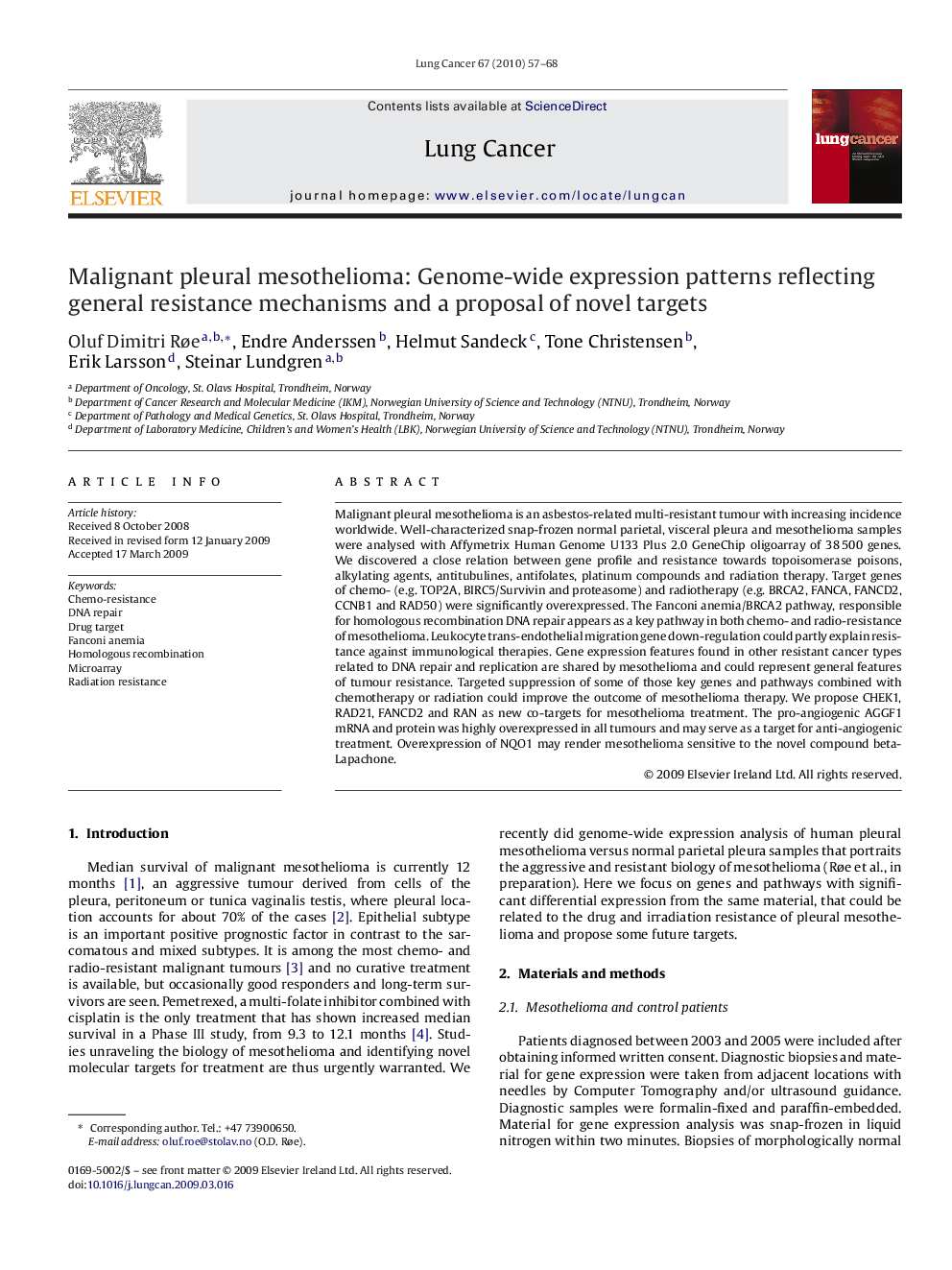| Article ID | Journal | Published Year | Pages | File Type |
|---|---|---|---|---|
| 2142666 | Lung Cancer | 2010 | 12 Pages |
Malignant pleural mesothelioma is an asbestos-related multi-resistant tumour with increasing incidence worldwide. Well-characterized snap-frozen normal parietal, visceral pleura and mesothelioma samples were analysed with Affymetrix Human Genome U133 Plus 2.0 GeneChip oligoarray of 38 500 genes. We discovered a close relation between gene profile and resistance towards topoisomerase poisons, alkylating agents, antitubulines, antifolates, platinum compounds and radiation therapy. Target genes of chemo- (e.g. TOP2A, BIRC5/Survivin and proteasome) and radiotherapy (e.g. BRCA2, FANCA, FANCD2, CCNB1 and RAD50) were significantly overexpressed. The Fanconi anemia/BRCA2 pathway, responsible for homologous recombination DNA repair appears as a key pathway in both chemo- and radio-resistance of mesothelioma. Leukocyte trans-endothelial migration gene down-regulation could partly explain resistance against immunological therapies. Gene expression features found in other resistant cancer types related to DNA repair and replication are shared by mesothelioma and could represent general features of tumour resistance. Targeted suppression of some of those key genes and pathways combined with chemotherapy or radiation could improve the outcome of mesothelioma therapy. We propose CHEK1, RAD21, FANCD2 and RAN as new co-targets for mesothelioma treatment. The pro-angiogenic AGGF1 mRNA and protein was highly overexpressed in all tumours and may serve as a target for anti-angiogenic treatment. Overexpression of NQO1 may render mesothelioma sensitive to the novel compound beta-Lapachone.
